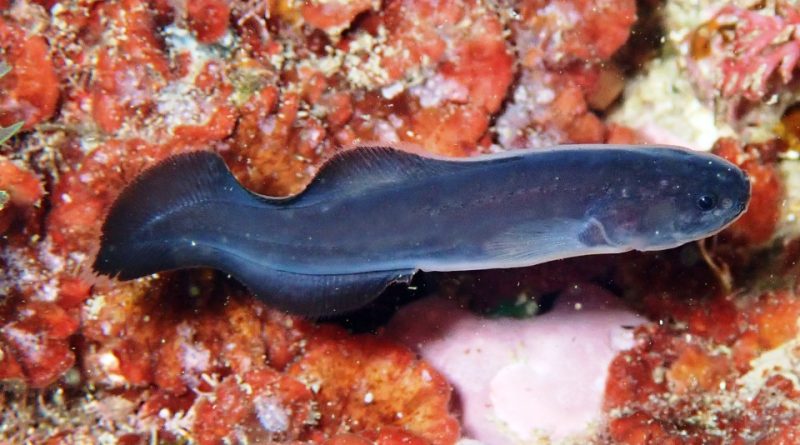Grammonus ater
Grammonus ater
The black tiplet or brotula (Grammonus ater Risso, 1810) is a marine bony fish belonging to the Bythitidae family.
Systematics –
From a systematic point of view it belongs to:
Eukaryota domain,
Kingdom Animalia,
Subkingdom Eumetazoa,
Superphylum Deuterostomia,
Phylum Chordata,
Subphylum Vertebrata,
Infraphylum Gnathostomata,
Superclass Osteichthyes,
Class Actinopterygii,
Subclass Neopterygii,
Infraclass Teleostei,
Superorder Paracanthopterygii,
Order Ophidiiformes,
Family Bythitidae,
genus Grammonus,
Species G. ater.
The terms are synonymous:
– Oligopus ater Risso, 1810;
– Oligopus niger Risso, 1827.
Geographic Distribution and Habitat –
Grammonus ater is an endemic fish of the Mediterranean Sea where it is known in the western basin and in the Adriatic Sea on the Dalmatian coast and found near the islands of Elba, Ischia and Sicily. It is apparently rare and very localized.
It is an abyssal fish present at least up to 700 meters deep. However, it has been encountered several times by divers in the darkest parts of underwater caves, in sometimes very shallow waters. At night it can sometimes be encountered even outside the caves. It probably makes some migrations from the abyssal depths to shallower waters in August.
Description –
Grammonus ater is recognized for having an elongated body, which does not exceed 12 cm in length, laterally compressed and tapering towards the pointed tail; moreover it is covered by small imbricate scales which are also present on the head, but not on the snout and on the dorsal part.
The color is on the uniform blackish-violet, often clearly tending towards blue, with the unequal darker fin.
The lateral line is formed by two branches, formed by slightly distinct and spaced sensory buttons; other sensory buttons are found on the head.
The head is large and has a small circular eye.
The nostrils are large, the anterior one opens at the end of a short tube facing forward.
The mouth is oblique and wide and inside we find villiform teeth. Others are found on the ploughshare. No teeth on the palatines.
The edge of the preoperculum is rigid and bears a prominence with a spine hidden under the skin. There are no spines in the operculum.
The dorsal fin, which has 68-74 rays, begins at the height of the middle of the pectoral fin and flows into the anal, with 51-52 soft rays, through the caudal, which does not have very differentiated rays (8). The pectoral fins are oval and broad, with 19-20 rays, short filiform ventral, filiform and bifid.
Biology –
Grammonus ater is a viviparous species.
The reproduction of this species takes place in the period of August when the female lays the eggs, which are dark blue, connected to each other by a whitish lattice.
Ecological role –
Grammonus ater is a fish that swims with uneven fin undulations and with pectoral fins. It is a nocturnal species that often stays in its den, which is very difficult for divers to spot.
This fish feeds on small benthic organisms.
It is occasionally caught with bottom trawls at great depths, or with nets in caves.
Nothing is known about its edibility.
The species is found in very restricted habitats (surface caves); it is not fished and there are no specific threats. Therefore, according to the IUCN, it is rated as Least Concern (LC).
Guido Bissanti
Sources
– Wikipedia, the free encyclopedia.
– GBIF, the Global Biodiversity Information Facility.
– Louisy P., 2016. Guide to the identification of marine fish of Europe and the Mediterranean. Il Castello Editore, Milan.
– Nikiforos G., 2008. Fauna of the Mediterranean. Giunti Editore, Florence.
Photo source:
– https://inaturalist-open-data.s3.amazonaws.com/photos/108404315/original.jpeg


